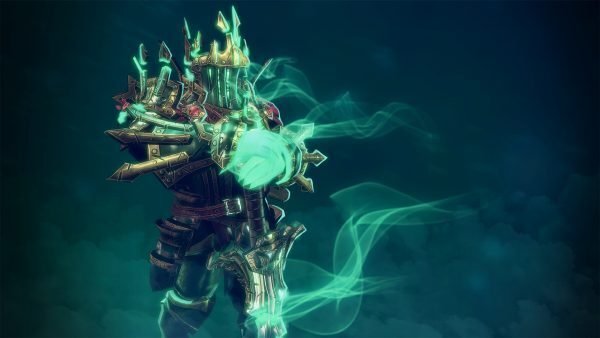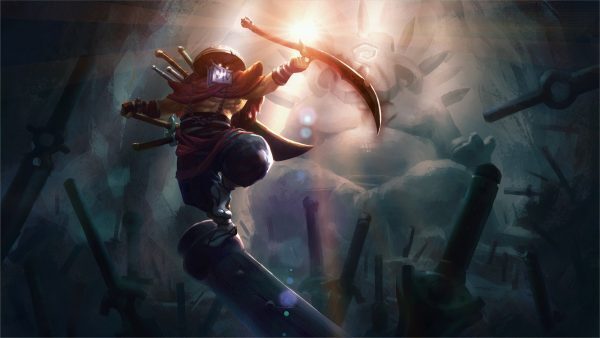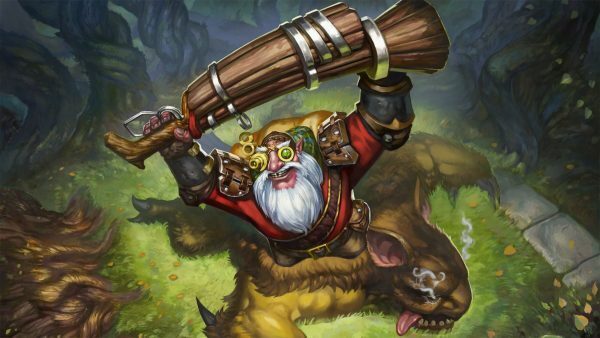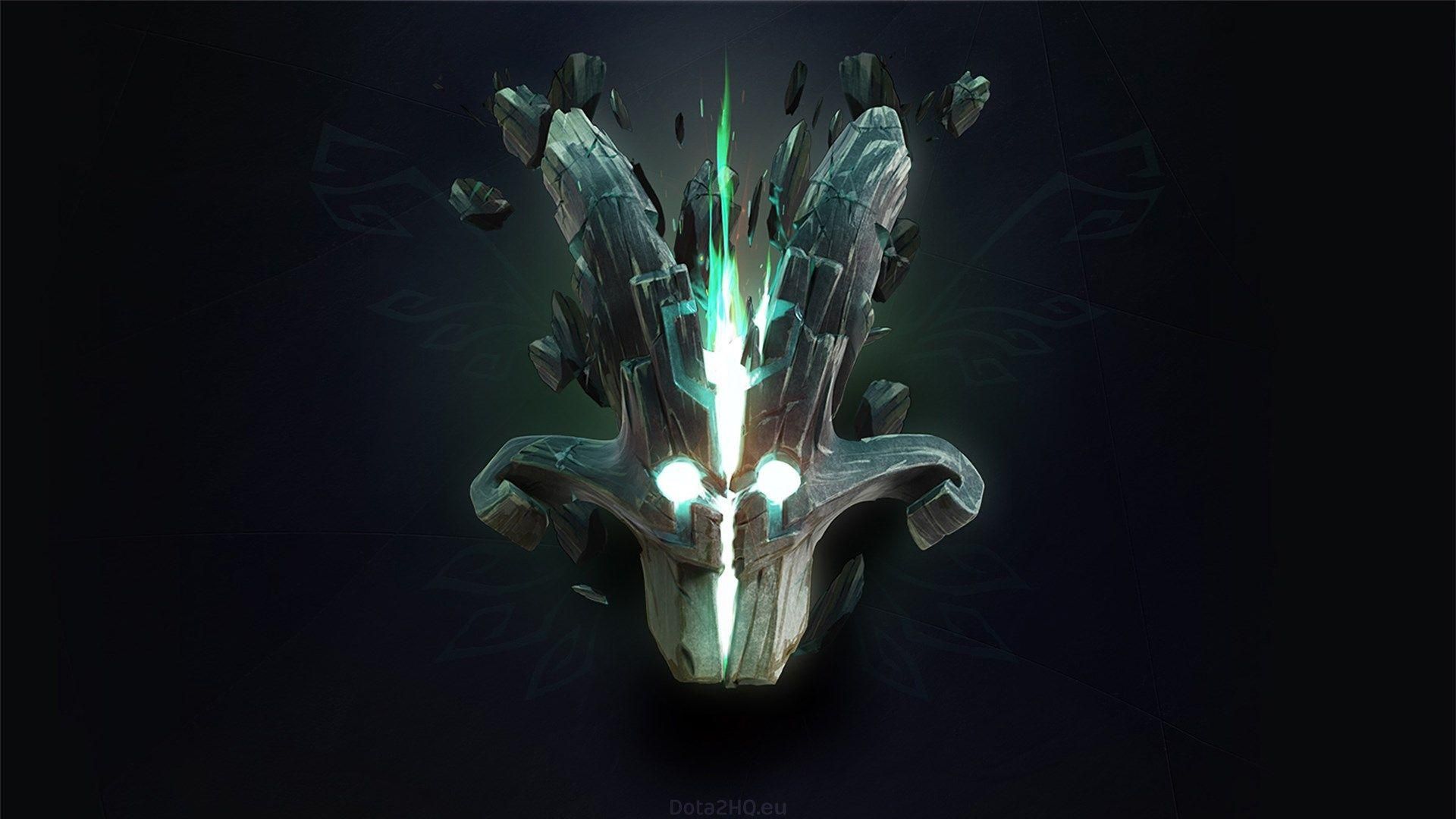Out of all the roles in Dota 2, the Hard Carry is the one that requires the most farm. It is the first of the three core positions, and is the most item-dependent of them all. This makes carry heroes extremely weak in the early game, when big, expensive items are out of reach.
Carries are most often the primary win condition for their team.
Despite their fragility and relative uselessness in the early game, carries rule over all others in the late-game. Carry heroes are designed to scale well the longer the game goes — with some being untouchable past a certain stage. Generally speaking, carries are responsible for late game physical damage output. This is because physical damage is usually more valuable later on, as magic damage tends to note scale as well.
Though the carry role isn’t the flashiest or the best at team-wide utility, the position is nonetheless extremely important. Most teams will have the carry as their win condition, especially with late-game-focused drafting. The concept of the role is “selfish,” but in the end, it is the one most likely to secure victory — especially in pubs.
If you’re all about putting your team on your back and taking them to the promised land, read on. We’ve got you covered with our hard carry role guide!
What Makes a Dota 2 Carry Hero?
Traditionally, heroes fit for the carry role are those that scale well into the late game with physical damage. They are borderline worthless early on without items, but become total monsters as they gain farm. Most carry heroes would prefer to avoid teamfights in the early game, instead gathering gold by killing creeps.
Carries are also designed to be vulnerable in the laning phase, particularly against multiple heroes. Because of this, they usually require “babysitting” — a term for directly supporting them in the lane. Hard support heroes are often the best in this regard, as they have abilities that help protect their carries. Some like Dazzle and Oracle can even save carries from certain death in the lane.
As a result, your prototypical carry is one that wants to sit back and farm the map rather than participate in fights early. They are terrible in the early game, but turn into serious threats later.
Not All Dota 2 Carry Heroes Are Made Equal
Of course, there are different types of carry heroes in the game. Not every carry hero is all about AFK farming until the 40-minute mark. Carries can pretty much be divided into two “classes”: the hypercarry and the brawler.
Hypercarry
The hypercarry is the purest form of the role. Weak as a kitten in the early goings, hypercarries become nigh unstoppable later on in exchange for a difficult laning phase. Such heroes are nothing without their core items, and would rather not see enemy players until they get their items. Once they do, though, they strike fear into the hearts of their opponents. Hypercarries with two or three big items are sometimes even capable of taking on entire teams by themselves.
The kind of physical DPS these heroes can pump out in late game scenarios is frankly obscene. This makes them the true definition of the role itself. Examples of hypercarries are Medusa, Terrorblade, and Spectre. These heroes should not participate in early skirmishes, as they are designed to only be useful late in the game.
Brawler
The brawler is the antithesis of the hypercarry, as they are able to fight from the get-go with limited items. Brawlers are designed to be active on the map early, and scale more with levels than extremely expensive items. These heroes are often equipped with abilities that give them early damage output. They may also have ways of disabling targets themselves without relying on other heroes. This means that brawlers are less interested in pure farming games. They are keener on taking fights early and often, which can turn into easy tower pushes and victories quicker than usual.
While they are able to fight early in the game, brawlers are weaker in the late game compared to hypercarries. They don’t scale as well as hypercarries, and generally want to close out games before it’s too late. Otherwise, heroes that are more suited to carrying late can take over after a certain point. This is when brawlers fall off in terms of effectiveness.
Do not mistake brawlers as “run at them” heroes, though. They are still carries at the end of the day, and need decent laning phases in order to succeed. It’s just that they don’t need as much farm as hypercarries. Examples of brawlers are Lifestealer, Ursa, and Slark. These heroes are able to participate in teamfights earlier than hypercarries can. However, they should not be expected to carry teams past a certain point in the game, due to their below-average late-game scaling.
The Basics of The Safe Lane
Lane Positioning
In almost all cases, the carry will head to the “safe lane” during the early game. The safe lane is the top lane for Dire, and bottom lane for Radiant. These two lanes are referred to as such because the creeps meet closer to one side’s tower in that lane. For example, the Radiant safe lane will see the creeps meet almost exactly inside the Radiant tower’s attack radius. Thus, the Radiant carry enjoys a shorter travel distance to the safety of their tower. It is the safe lane compared to the Dire as such.
The matchup is almost always a two-on-two affair. It involves the carry themselves, partnered with one of the supports on their team (typically the hard support). Their lane opponents will usually consist of the enemy offlaner and soft support. The carry is responsible for securing as many last hits as possible while avoiding death. Their partner, on the other hand, is tasked with protecting them, typically by harassing the offlaner and soft support.
External Assistance
Their opponents, meanwhile, are there to either bother the carry such that they can’t go for last hits. If the creep equilibrium (where the creeps meet and clash) is in their favor, they can threaten the carry and the hard support with a dive. This is the ideal way to shut down a carry in the lane. Failing that, the opposing offlaner and soft support must at least try to stay even in creep kills and experience gain.
Occasionally, the mid laner on the carry’s team can assist by ganking the offlaner and soft support. This is typically done once the mid laner hits level six. Conversely, the opposing side can call on their own mid laner to help shut down the carry. This dance continues until around the 15-minute mark. The outcome of the matchup can swing the game in one side’s favor — particularly if the carry either farms freely or gets killed a lot early.
Optimal Moves and Maneuvers as a Dota 2 Carry
So, you now know what constitutes a carry hero and what the matchup entails. But how exactly do you go about playing carry?
Staying Alive
As mentioned before, your primary goal is to score as many last hits as possible while avoiding death. The latter is especially vital to winning as a carry. After all, being dead means you can’t actively earn gold — which is of course bad for carry heroes. Mind your positioning, and don’t get too greedy for last hits. This makes it easy for your opponents to punish you early. Focus on staying alive while getting what you can.
Your support should be able to harass and discourage your opponents from bothering you too much. If they are not already doing so, you can kindly ask them to “pull” the neutral creep camp closest to your tower. Done properly, this will force the next incoming friendly creep wave to walk into the jungle rather than the lane.
Exercising Restraint
The creep equilibrium practically determines 90 percent of positioning in the lane. If the creep wave is more towards your side of the map, you’ll be able to farm more aggressively. This is because it will be riskier for your opponents to contest last hits or even go for kills on you. You’ll have the protection of your tower to back you up, which makes farming more comfortable overall.
It is for these reasons that we strongly discourage auto-attacking creeps until you are ready to land the last hit. Mindlessly attacking creeps at all times makes them die faster, which pushes the equilibrium away from your side. Doing so also makes it more difficult to land last hits in the first place, which requires some timing.
Off to the Forest
If the lane goes south, particularly if you die a few times or are unable to score last hits, the jungle is there. Sometimes it is better to simply abandon the lane and retreat to the jungle to farm neutral creeps. This way, your lane opponents have to leave the lane and miss out on last hits of their own if they want to punish you.
Of course, there are more than a few caveats to doing this early. First, not all carry heroes are suited for jungle farming early on. Neutral creeps are much stronger than heroes in the early game, and it may be unsafe for you to farm the jungle so soon. Second, jungle creeps give less gold on average compared to lane creeps. This will definitely slow your farm down comparatively, but it’s much better than dying over and over again.
Otherwise, your last resort is to ask to swap places with your offlaner. This is the least ideal scenario, but it is always better than not getting anything out of being stubborn in the safe lane.
What Heroes Should I Pick As A New Dota 2 Carry Player?
While being a great carry requires game sense and mechanical skill, there are a few picks suitable for novice players. These heroes do well on their own without requiring an advanced understanding of Dota 2. They are also considered more forgiving than high skill ceiling carries. We suggest these three heroes to start your carry journey with:
Wraith King
Wraith King is a very simple Dota 2 carry hero, with an overall straightforward gameplan. He is durable, has the potential to pump out insane physical DPS, and farms really, really fast. His Mortal Strike (E) makes timing last hits in the lane almost trivial. Wraithfire Blast (Q) provides him with a useful single target stun. Vampiric Spirit (W) gives him passive life steal and the ability to summon skeletons with every two creep kills. The latter part is especially useful for pushing creep waves and farming jungle camps.

To top it all off, he has Reincarnation (R), which revives him with full health and mana after a set delay on death. This ability makes him very irritating and difficult to bring down.
Juggernaut
Juggernaut is a versatile agility carry who occupies the middle ground between hypercarry and brawler. His kit allows him to be relevant at any stage in the game — even in the laning phase thanks to Blade Fury (Q). Blade Fury does a hefty amount of magic damage over time to nearby enemy units. It also protects Juggernaut from magic, making it easy to escape by hitting Q and teleporting out.

Healing Ward (W) sustains him and his teammates in teamfights, though it can be killed by enemy heroes. Blade Dance (E) functions as a free critical strike. And his ultimate Omnislash (R) makes him invulnerable and untargetable while jumping from enemy to enemy, dealing damage along the way.
Sniper
The quintessential “beginner-friendly” Dota 2 carry. Sniper is able to hit enemy heroes from a safe distance thanks to Take Aim (E), which passively extends his attack range. Combined with Shrapnel (Q) and Headshot (W), his targets will find themselves unable to approach him without mobility skills. His ultimate Assassinate (R) helps him finish off stragglers, after taking some time to draw a bead.

Sniper is especially deadly in the lower ranks of public matchmaking. This is due to the fact that teams are less coordinated at lower MMR, and fail to jump Sniper’s position properly. His usefulness does fall off as you go up the ladder, so try not to get too used to playing him as a carry.
P/S: If you are interested in our blog posts and has been looking for ways to improve yourself as a dota 2 player, you can take a fast quiz test to find out more about our coaching lessons here at vikingdota.com.


 Tài khoản Dota 2 Chính thức (Còn hàng)
Tài khoản Dota 2 Chính thức (Còn hàng) Dịch vụ cày đơn
Dịch vụ cày đơn Dịch vụ cày đôi
Dịch vụ cày đôi Coaching Services
Coaching Services Dota 2 Gift Only Items
Dota 2 Gift Only Items


Share:
Flying Solo: How to play Mid in Dota 2
Tanking your way: How to play Offlane in Dota 2